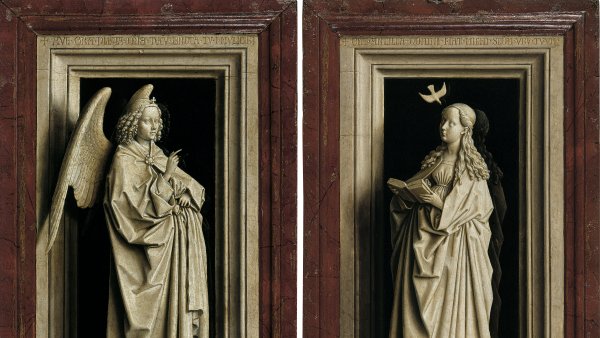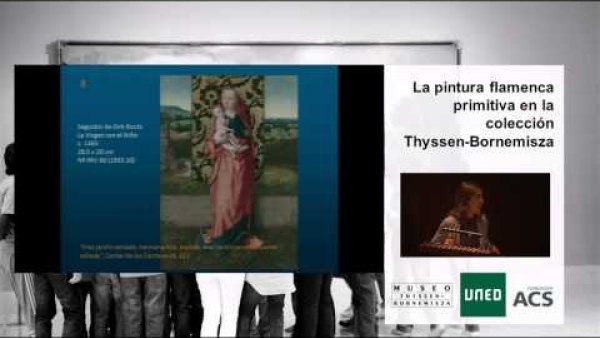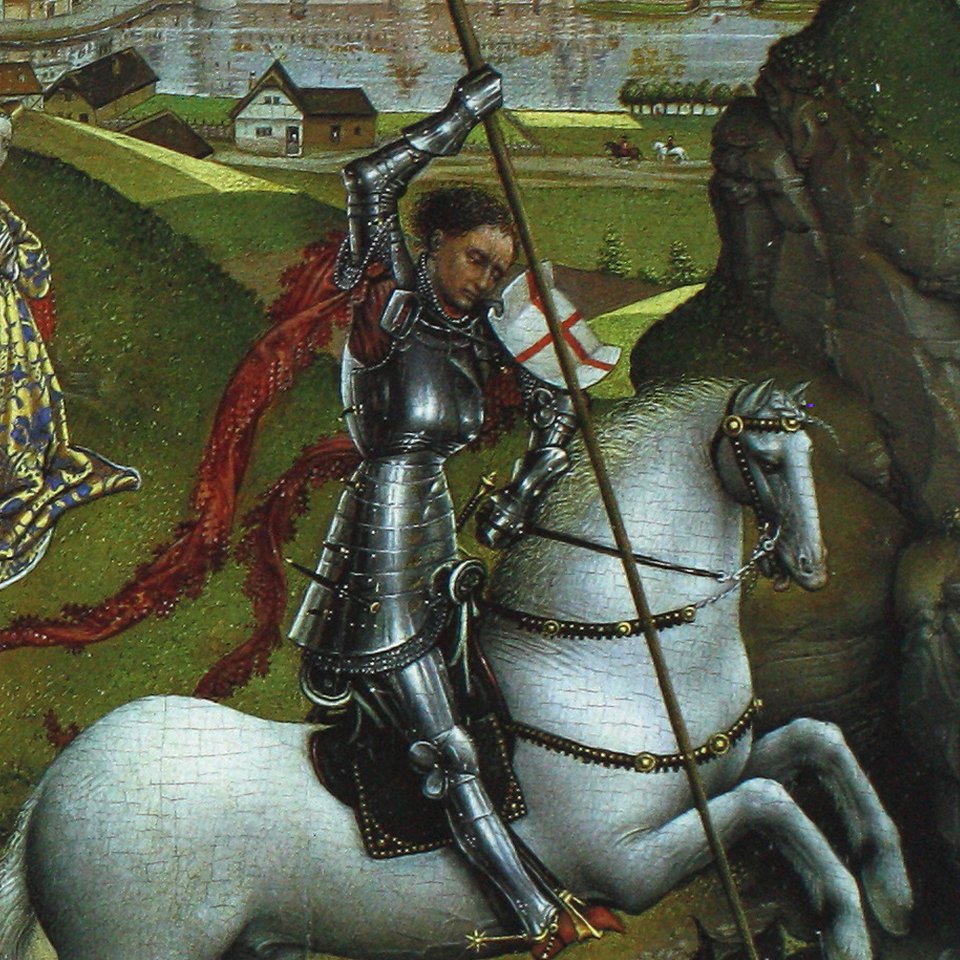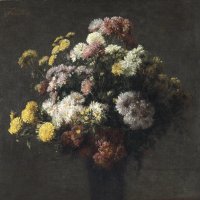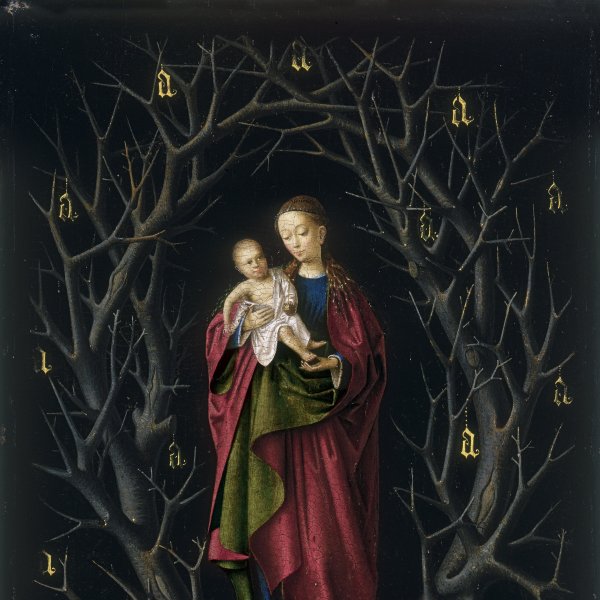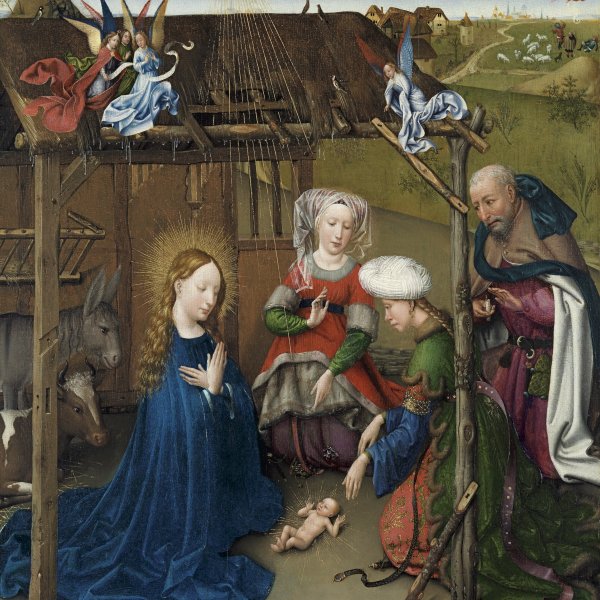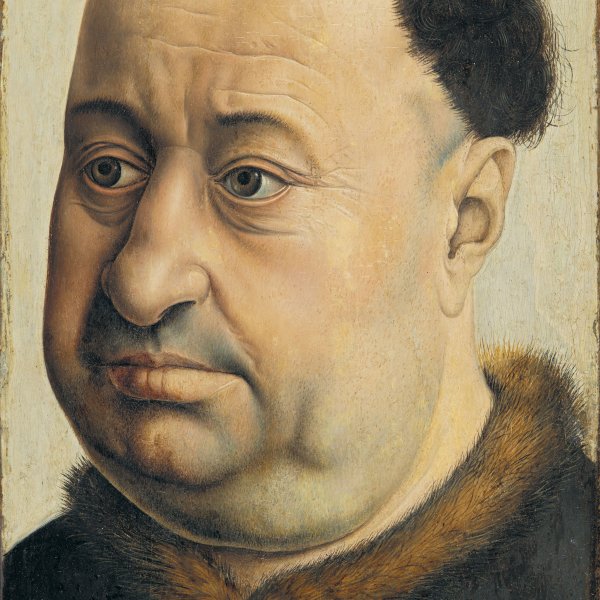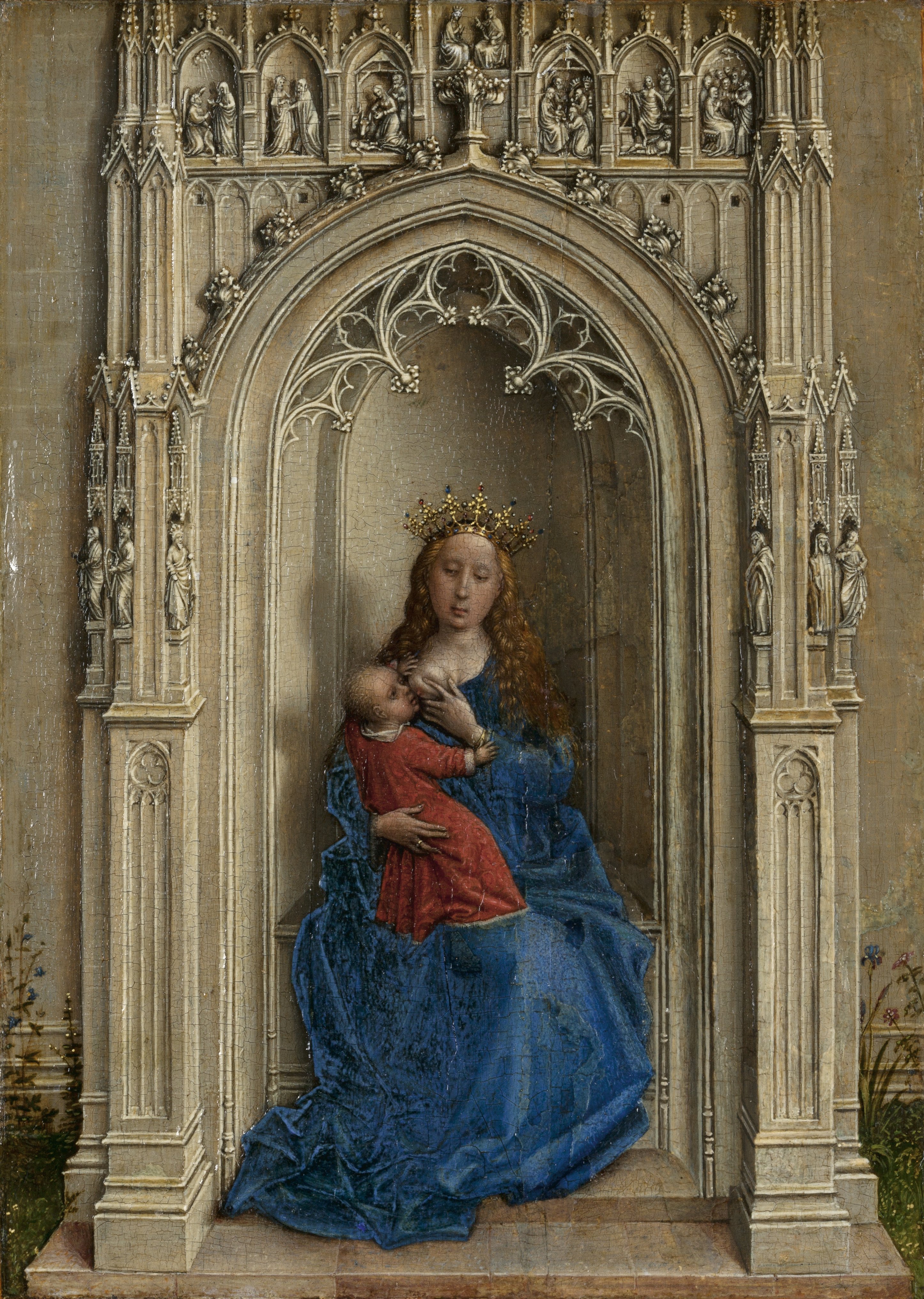The Virgin and Child enthroned
Together with Jan van Eyck, Rogier van der Weyden was one of the greatest figures of 15th-century art. Among his notable contributions to Flemish painting of his day were his exceptional technique and the marvellous expressivity of his figures that convey emotions such as suffering and sadness. This small, delicate panel depicts one of the new motifs developed by Flemish painters: that of the Virgin in a church. In such works the Virgin is shown seated with the Christ Child in front of what could be the porch of a church or a Gothic chapel. The architectural decoration contains references to the Old Testament in the figures of the prophets in the jambs of the arch and King David, as well as the New Testament, with scenes in which the Virgin is the principal figure such as the Annunciation, the Visitation, the Nativity, the Adoration of the Christ Child and the Adoration of the Magi. In general, the present composition emphasises the Virgin’s role as mother by showing her breast-feeding the Christ Child in her arms, while the crown refers to her as Queen of Heaven and the ring on one of her fingers to her role as the Bride of Christ.
NR
This small panel of the Virgin and Child belonged to Frederick II of Prussia. It was in the Rohoncz collection by 1930, the date when it was included in the exhibition held at the Neue Pinakothek in Munich which first revealed Heinrich Thyssen’s collection to the wider public. Attributed to Dürer while it was in the collection of Frederick II, it was later published as a work by Memling, by Van Eyck and by two anonymous masters. The first link with the circle of Van der Weyden was made in 1892 in an exhibition on Flemish Primitives held at the Burlington Fine Arts Club in London, where the panel was exhibited as a work by Van der Weyden, an attribution that has been maintained since 1910. The early Netherlandish painters, led by Van der Weyden, were particularly creative in their invention of new iconographic subjects, which were then disseminated in an effective manner throughout the rest of Europe. Among these new themes was that of the Virgin in a church, as seen here. Despite its small size, Van der Weyden’s composition conveys a sense of monumentality, executed with enormous technical ability and a miniaturist or goldsmith’s attention to detail.
The Virgin is depicted seated with the Christ child in a stone niche with an ornamental surround attached to an exterior wall of a church. Wearing an intense blue robe and crowned as Queen of Heaven, she holds the Child in her lap as she breastfeeds him. The red of the infant Christ’s robes refer to his future sacrifice. This presentation of the Virgin, which had been popular since the late Middle Ages, emphasises and exalts Mary’s role as mother. She is shown here not only as Queen of Heaven (through the crown) and Mother of God (by breastfeeding Christ) but also as the Bride of Christ from the ring that she wears on one of her fingers.
With regard to the setting, the niche surrounded by sculptural decoration is a free interpretation of a portal of a Gothic church, its iconography referring to the Old and New Testament, as was traditional in such decorative ensembles. The Old Testament, whose episodes were seen to prefigure the New, is illustrated in the jambs of the arch through the figures of the Prophets. Only David in the centre on the left pilaster with his crown and harp can be securely identified. As a musician, David’s psalms gave him a messianic facet as a prefiguration of Christ while his compositions paid homage to the divine, symbolising repentance of sin. Next to him is another crowned sculpture that might be Solomon, a monarch who was also interpreted as a prefiguration of Christ. In the top zone of the arch, in small oval niches, we see various episodes from the New Testament in which the Virgin is particularly important: The Annunciation, The Visitation, The Birth of Christ, The Adoration of the Christ Child by Mary, and The Adoration of the Magi. From the cycle of Christ’s Glory, Van der Weyden selected The Resurrection and The Pentecost, while from the Glory of the Virgin he selected The Coronation, which also functions as the central axis of the arch. This complex iconographic programme emphasises the role of the Virgin as Mother of Christ and intercessor before God for Man’s salvation. The scene, whose emotion is expressed in Mary’s sad, meditative gaze, is depicted with a perfect degree of finish by the artist.
The Virgin and Child enthroned has been related to another panel depicting Saint George dated to around the same period, in the National Gallery of Art, Washington. The dimensions of the two works are almost identical and their stylistic features led Herman Beenken to consider them part of the same ensemble. He suggested a diptych, which is an unconvincing proposal, as it would locate the panel with the Virgin on the right, a very uncommon arrangement for depictions of this type. The most convincing suggestion seems to be the one made by John Oliver Hand and Martha Wolff, who proposed that the two panels were the front and back of one composition.
Mar Borobia

